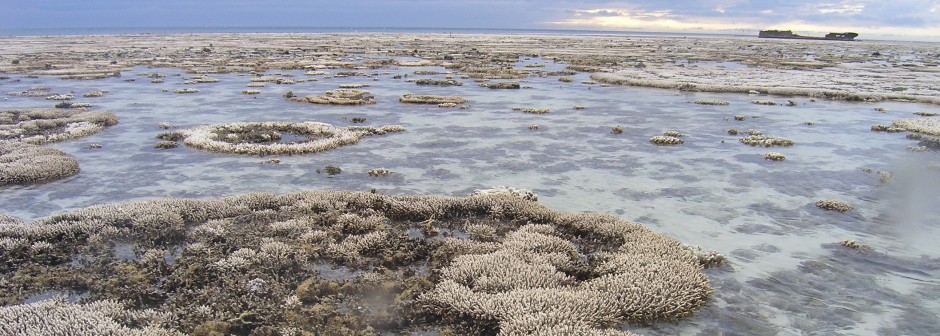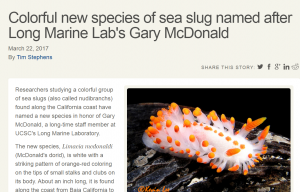While unknown species continue to disappear, researchers look to find undiscovered species and to document them. I wish to address the process of finding and documenting new species to the scientific community and rates of species discoveries. The rate of recovery is paramount to estimating total species diversity in both terrestrial and marine ecosystems.
Once a potentially undocumented species is found the following process (more or less) id followed1:
- A type specimen is collected
- The type specimen is compared to documented species
- IF found to be unique from known species, researchers write formal documentation
- The description is submitted to journal
- Peer experts review the submission for validity
- IF approved, the species description is published and circulated (Image 1 below)
Image 1. Screenshot of news article announcing newly described nudibranch species. Link provided below6 . Article written by Tim Stephens, Photocredit : Kevin Lee. Primary literature linked below7.
Overall the formal taxonomic process can be quite long, taking years sometimes after the initial discovery. However the instances of discovery offer another means of research. The rate of discoveries and the prediction of future rates of discovery are used in the process of estimating diversity2. Ecologists estimate diversity using the assumption that as discovery rates decrease, scientists are approaching the total diversity. Researchers have not reached this point yet for marine environments – the rate of new species descriptions are at the highest ever3. As seen in Image 2 below, approximately 2000 species are described per year. And while diversity estimates are made using mathematic modeling, it is still mathematical guesswork. This guesswork is made more reliable through more exhaustive sampling and the recognition of patterns of diversity. Patterns also guide further sampling efforts.

Image 2. Black shows the number of accepted valid species per year. Grey shows the number of species described per year. Year on x axis. Appeltans, Wards et al.3
Some marine habitats have been under sampled just as they have been under-researched. In some cases this is still due to inaccessibility or insufficient equipment (a common theme). In marine environments depth adds complexity to patterns. Benthic (sediment bottom) communities are being used to study patterns of diversity4, 5. Sampling found both coastal and deep-sea benthic communities have high species richness, however coastal communities have been much more thoroughly sampled4. Latitudinal gradients are also observed in marine communities, as they are in terrestrial habitats5. Other factors such as temperature and productivity further complicate patterns.
As technology improves, sampling becomes easier. Fewer species are likely to be missed, but the line between species is sometimes blurred. Genetic testing lumps or splits previously described species, redefining previously accepted species boundaries. Also ongoing speciation changes the species categories that have already been accepted. As species continue to evolve, changes must be accounted for as we attempt to find answers to the question of diversity.
1 http://global.mongabay.com/news/profiles/new_species.html
6 Stephens (2017) Colorful new species of sea slug named after Long Marine Lab’s Gary McDonald


